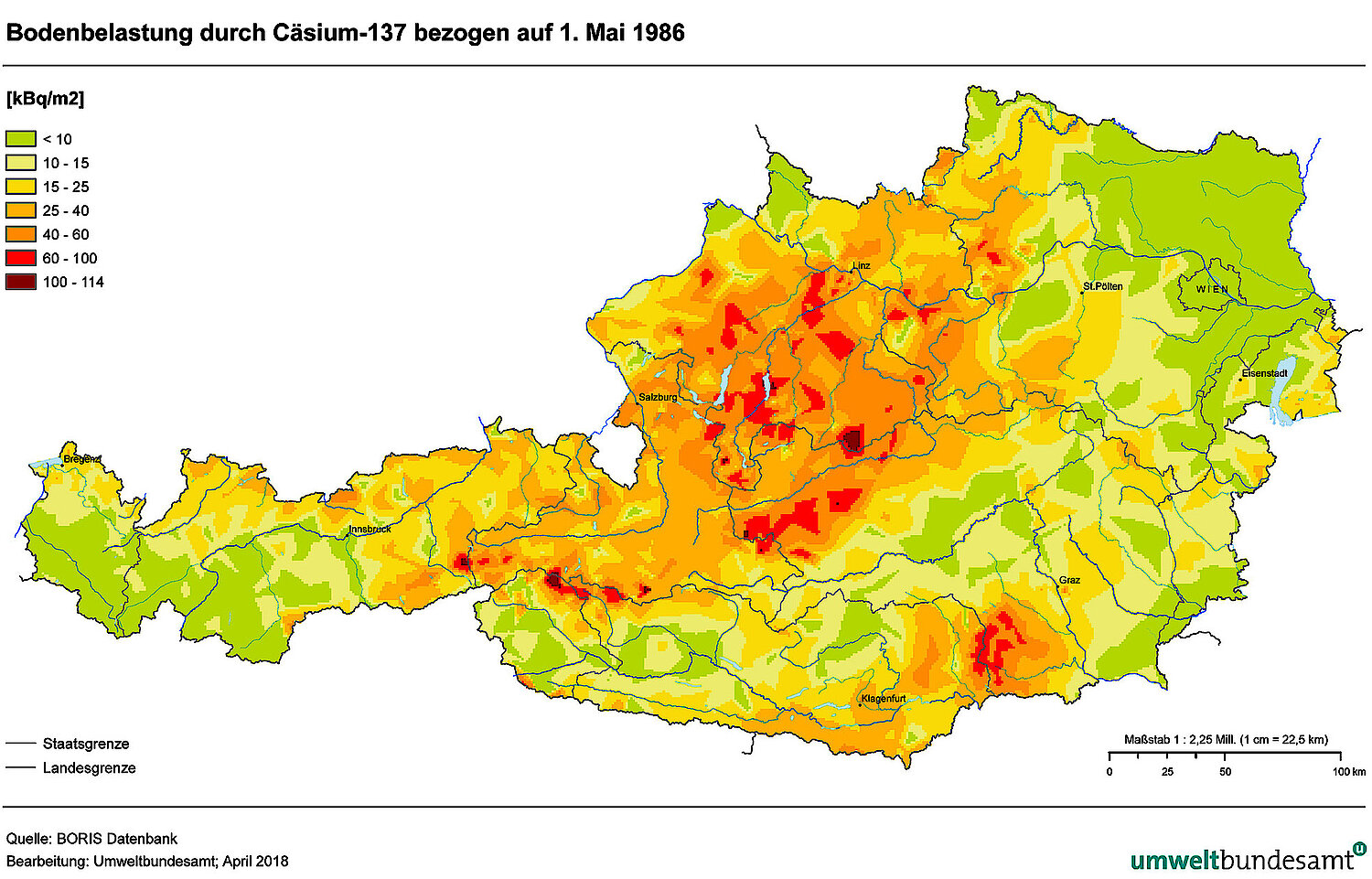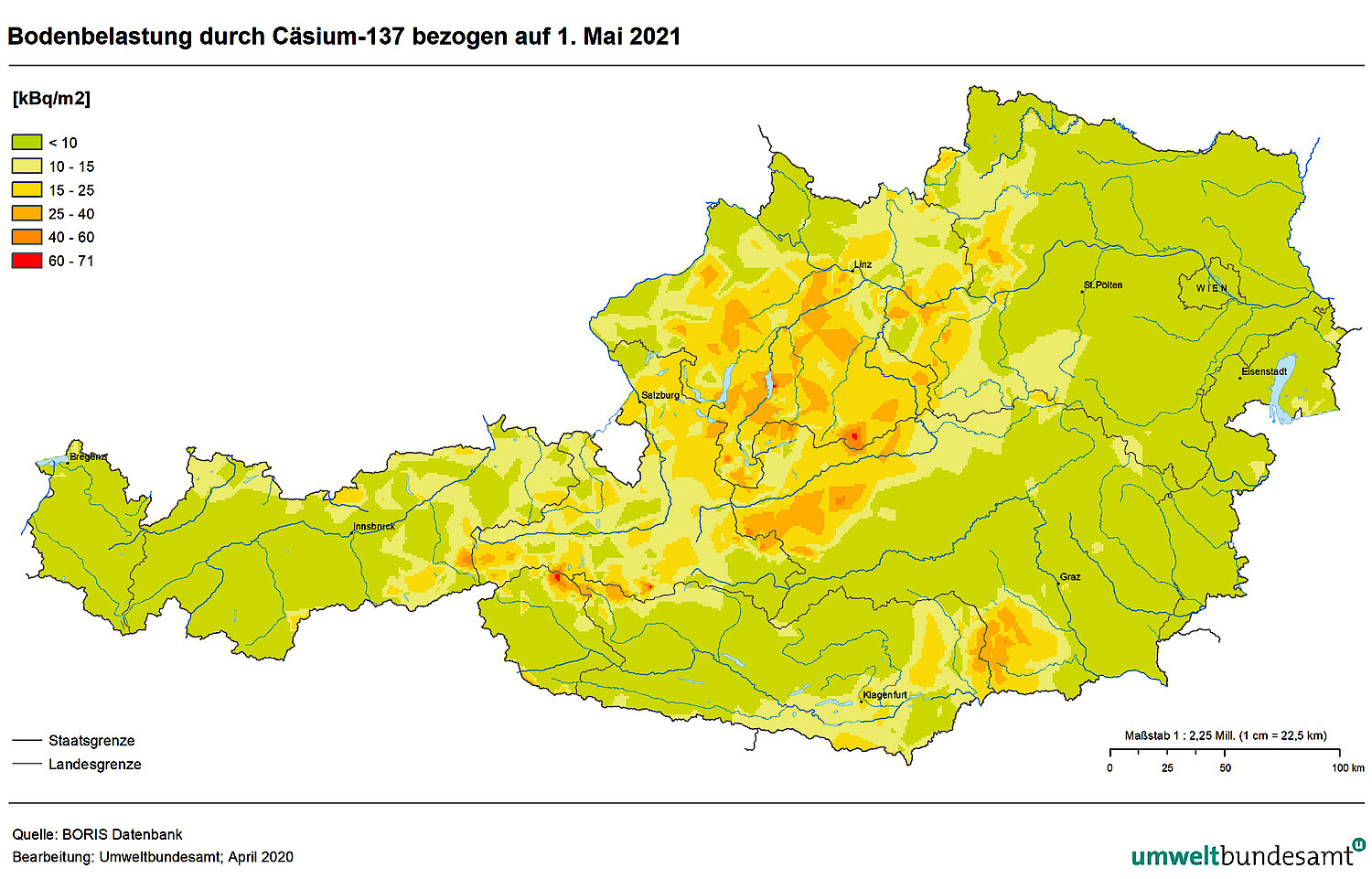35 years since the Chernobyl reactor accident
35 years after the most serious accident in the history of European nuclear energy, the effects on the environment are still present. A current map from the Environment Agency Austria shows where and to what extent Austria's soils are contaminated with cesium-137. The Environment Agency Austria was one of the first institutions to scientifically assess the consequences of this disaster.
On April 26, 2021, it will be 35 years since the reactor disaster at the Chernobyl nuclear power plant in Ukraine. The history of the Environment Agency Austria is closely linked to the history of Chernobyl: the first publication of the Austrian expert institution was published a few months after the reactor accident and deals with the consequences for Austria. Austria was particularly affected by the weather conditions prevailing at that time compared to other Central European countries.
Cesium-137: Environment Agency’s map shows late effects
The updated map of the Environment Agency Austria shows how heavy the soils in Austria are still contaminated with radioactive caesium-137 today. With a half-life of about 30 years, cesium-137 is an important indicator of the long-term contamination of the environment by the radioactive substances released. The highest caesium-137 values are recorded in areas of Upper Austria, Carinthia, Salzburg and Styria. The regional differences are due to the amount of precipitation in the days following the reactor accident.


